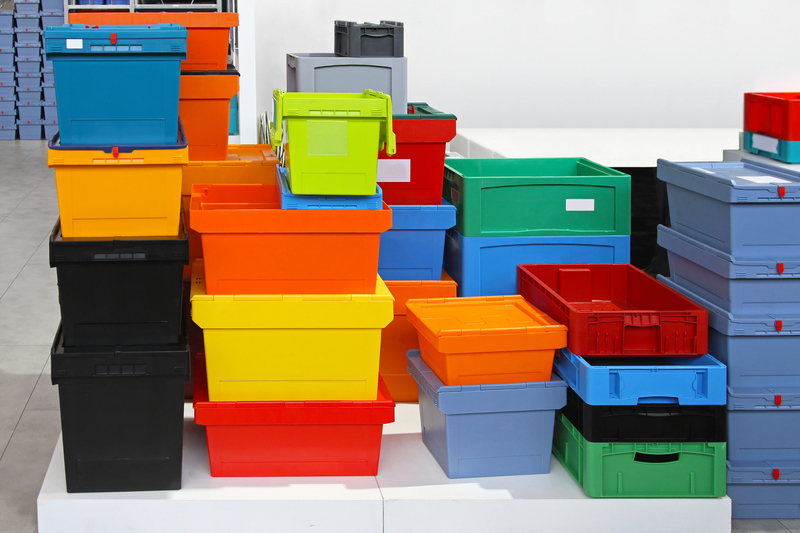Preservation Perfection: Expert Sofa Storage Techniques
Posted on 18/05/2025
Preservation Perfection: Expert Sofa Storage Techniques
If you're preparing for a move, downsizing, or simply in need of more living space, storing your sofa can be an excellent solution. However, improper storage methods can lead to damage, permanent stains, or a musty odor that is hard to remove. Mastering expert sofa storage techniques is key to preserving your furniture's condition and value.
Why Is Proper Sofa Storage So Important?
Your sofa is likely a major investment, both financially and in terms of comfort. Unlike other pieces of furniture, sofas are prone to absorbing moisture, dust, pests, and odors if stored incorrectly. Proper preservation methods will ensure your couch emerges from storage looking just as inviting as when you put it away.
In this comprehensive guide, we'll cover:
- The best expert sofa storage tips
- Common mistakes to avoid when storing sofas
- Essential supplies for perfect sofa preservation
- Long-term and short-term sofa storage techniques
- Specific storage tips for leather, fabric, and sectional sofas

1. Preparing Your Sofa for Storage
Preparation is crucial for sofa preservation perfection. The better you prepare, the better the results will be after storage. Here are the most important steps:
1.1 Thorough Cleaning
- Vacuum Crevices: Use an upholstery attachment to remove dust, crumbs, and debris from all the nooks and crannies.
- Spot Clean: Address any stains before storage using manufacturer-approved cleaning agents.
- Professional Cleaning: Consider hiring a professional service, especially for expensive or delicate materials.
Why? Any dirt left behind can attract pests or become embedded over time, making cleaning difficult post-storage.
1.2. Disassemble When Possible
- Remove legs, cushions, and detachable arms to minimize the risk of breakage and make your sofa easier to transport and store.
- Label all components and keep hardware in a clearly marked bag.
1.3. Dry Thoroughly
- Ensure your couch is completely dry before storing. Moisture is the enemy and can lead to mold or mildew.
2. Choosing the Right Storage Space
Your choice of storage unit matters immensely for preservation.
- Climate-Controlled Units: Offer protection from humidity, extreme temperatures, and moisture buildup--vital for both leather and fabric sofas.
- Clean, Dry Environment: Inspect for leaks, dampness, or pest infestations before use.
- Adequate Space: The unit should be large enough for your sofa to remain upright and not crammed against other objects.
Pro Tip:
If you must use a garage or basement, invest in a quality dehumidifier and use raised pallets to keep the sofa off the direct floor.
3. Expert Sofa Wrapping and Protection Techniques
Proper wrapping is one of the most essential couch storage tips for ensuring your sofa isn't exposed to dust, moisture, or pests.
Best Wrapping Materials
- Furniture Blankets: These offer cushioning and protection against scratches.
- Breathable Covers: Cotton or muslin sheets allow airflow and prevent condensation. Avoid plastic directly touching upholstery, as it can trap moisture.
- Plastic Wrap for Legs: It's safe for wooden/metal legs and frames, but never use it on the upholstery surface for long-term storage.
Wrapping Steps for Preservation Success
- Wrap each removable part (cushions, arms, legs) separately for maximum protection.
- Cover the sofa first with a cotton sheet, then drape a furniture blanket for additional padding.
- Secure everything with twine or packing tape (over the blankets, never directly on the fabric).
- Allow some ventilation to prevent moisture buildup.
Bonus Tip: Never use colored newsprint, as ink can transfer and permanently stain your sofa.
4. Storing Your Sofa: Positioning and Stacking
Sofa Storage Positioning Tips
- Store Upright: Wherever possible, keep your sofa standing upright. Never stack heavy items on top, which can warp or crush the frame or cushions.
- Leave Space: Leave a few inches between the sofa and the storage unit walls to encourage airflow and prevent mold growth.
- Pallet Placement: Keep your couch off the floor with pallets or blocks. This protects against flooding, pests, and condensation.
Don't Commit These Couch Storage Sins!
- Don't wrap in plastic for the long term--it traps moisture!
- Avoid placing your sofa in direct contact with concrete floors--moisture can seep upward and ruin fabrics or wood.
- Never bend or squeeze the sofa into a tight spot, which can damage the frame and padding.
5. Specialized Sofa Storage Techniques
5.1 Leather Sofa Storage Preservation
- Condition the Leather: Apply a leather conditioner before storage to prevent drying and cracking.
- Always use a breathable cover (cotton or muslin)--plastic promotes mold and stuck-on finishes.
- Avoid extremes of temperature and humidity, which are especially harmful to leather.
5.2 Fabric Sofa Storage Preservation
- Clean and dry completely before covering with breathable material.
- Use moth repellents like cedar blocks if you store in a location prone to pests.
- Use a vacuum-sealed storage bag for loose, removable cushions (optional).
5.3 Sectional Sofa Storage Perfection
- Disassemble each section and label for easy reassembly.
- Store sections individually and cover each part fully.
- Bundle any connectors or attachment parts in a clear, labeled bag attached to the largest piece.
6. Long-Term vs. Short-Term Sofa Storage
Short-Term Storage Solutions
- Focus on quick protection--clean, dry, and cover with a sheet or blanket.
- Climate control is helpful but not absolutely essential for a week or less.
- Keep relocation plans handy for a swift move back home.
Long-Term Sofa Storage Expertise
- Invest in premium, climate-controlled storage for valuable or antique sofas.
- Review and rotate covers every few months to check for any issues and freshen up the air.
- Re-apply leather conditioner every 6-12 months if storing a leather couch for extended periods.
- Consider placing actual silica gel packets (in safe quantities and out of children's/pets' reach) nearby for extra moisture absorption.
7. Essential Checklist: Supplies for Sofa Storage Preservation
- Vacuum cleaner with upholstery attachments
- Furniture blankets and cotton sheets
- Packing tape and twine
- Labels and ziplock bags for hardware
- Leather conditioner (for leather sofas)
- Pallets or blocks to lift the sofa off the floor
- Cedar blocks or moth sachets (for pest-prone storage locations)
- Silica gel packets for additional moisture control
8. Common Sofa Storage Mistakes and How to Avoid Them
Mistake 1: Storing a Dirty Sofa
Leftover crumbs and residue attract pests and can create stains that worsen with time. Always clean thoroughly before storage!
Mistake 2: Ignoring Humidity
Unregulated environments can warp wood and rot fabrics. Opt for climate control whenever possible.
Mistake 3: Using Plastic Wrap Directly on Upholstery
While plastic shields from external dirt, it also prevents fabric from "breathing," causing trapped moisture and, ultimately, mold.
Mistake 4: Piling Items on the Sofa
This might save space but almost always results in bent frames or permanently compressed cushions. Always store your sofa upright and give it space.
9. After Storage: Bringing Your Sofa Back into Use
When it's time to bring your sofa out of storage, follow these expert revival steps:
- Unwrap and Inspect: Carefully remove all coverings and inspect for any surprises--pests, mold, or damp patches.
- Vacuum and Air Out: Let your sofa air out in a well-ventilated room or outdoors (weather permitting) for several hours.
- Recondition: For leather sofas, apply a fresh layer of conditioner. For fabric, consider a professional steam clean if necessary.
- Reassemble: Put back all removed components, using your labeled hardware bags as a guide.

10. Frequently Asked Questions About Sofa Storage
How long can I safely store a sofa?
With proper preservation techniques, sofas can be safely stored for months or even years. Climate control and regular check-ins will extend your sofa's lifespan significantly.
Can I store my sofa outdoors under a tarp?
Outdoor storage--even with a tarp--often leads to irreversible moisture and pest damage. Whenever possible, choose indoor, climate-controlled environments for sofa preservation perfection.
What should I do if my sofa smells musty after storage?
Air it out in a dry, sunny space, sprinkle baking soda on fabrics, and vacuum after several hours. Persistent odors may require professional upholstery cleaning.
Conclusion: Perfect Sofa Storage, Every Time
Storing your sofa the right way is a blend of preparation, protection, and careful selection of your storage environment. By following these expert sofa storage techniques--from cleaning and wrapping to climate-controlled storage--you can ensure your living room centerpiece remains beautiful and comfortable for years to come.
Take the extra time to care for your sofa before, during, and after storage. You'll achieve true preservation perfection--and enjoy your furniture for countless cozy moments to come.



